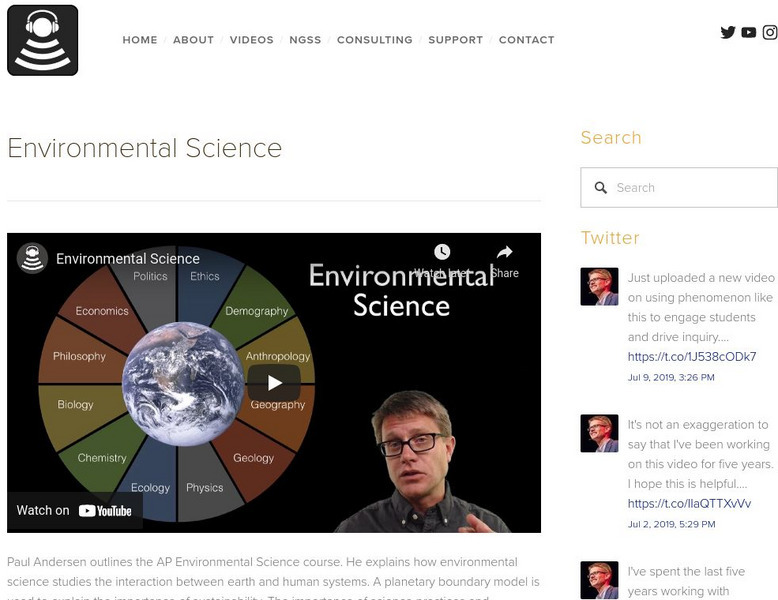Bozeman Science
Environmental Matter Exchange
Why did carbon marry hydrogen? They bonded well from the minute they met. Here is a video that focuses on the essential chemicals for life: water, carbon, nitrogen, and phosphorus. It relates each of these to macromolecules and the way...
Be Smart
How Much Plastic is in the Ocean?
Plastics in our oceans not only create unsightly litter, but they also threaten habitats. A video episode maps the location of the majority of the plastic debris and explains the impact the debris has on our world. The lesson also...
Bozeman Science
LS2C - Ecosystem Dynamics, Functioning and Resilience
How do ecosystems react to change over time? Show your class how natural and man-made factors affect the organisms in an area using the guidelines in a video about standard LS2C. Topics include biotic and abiotic factors, biodiversity,...
Orange County Water Atlas
Location, Location, Location…
Young geographers discover not only how to read and recognize coordinates on a map, but also gain a deeper understanding of latitude and longitude and how climate changes can vary significantly across latitudes.
California Academy of Science
Think Before You Eat
Small changes in individual diets add up quickly, which is the theme of the ninth lesson in the 13-part Our Hungry Planet unit. Viewers watch a video to learn basic facts before reading a handout and discussing their own choices.
California Academy of Science
Desalination
Desalination requires around two gallons of sea water to make one gallon of fresh water—that's quite a ratio! Viewers consider the pros and cons of desalination as one option to providing fresh water. They learn about two different...
Bozeman Science
Bozeman Science: Environmental Science
Paul Andersen outlines the AP Environmental Science course through a video, concept map, and slideshow. He explains how environmental science studies the interaction between earth and human systems. A planetary boundary model is used to...
Bozeman Science
Bozeman Science: Environmental Systems
Paul Andersen explains how matter and energy are conserved within the Earth's system. Matter is a closed system and energy is open to the surroundings. In natural systems steady state is maintained through feedback loops but can be...
Bozeman Science
Bozeman Science: Geology
Paul Andersen explains how rock is formed and changed on the planet. The video begins with a brief description of rocks, minerals, and the rock cycle. Plate tectonics is used to describe structure near plate boundaries. Hot spots and...








